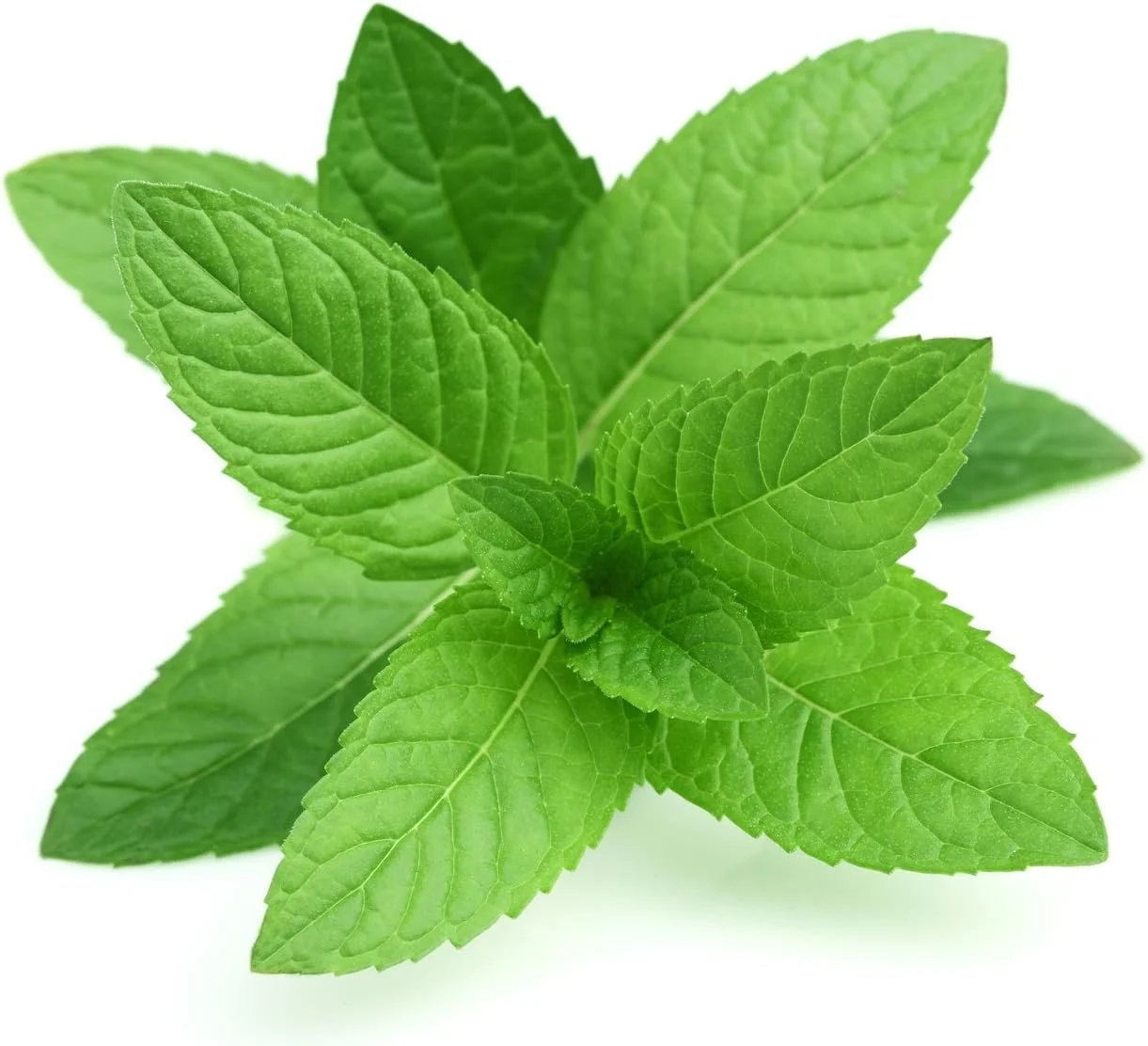Farmer's Market Online® Guide to Mint
This popular herb, also known as Mentha, has more than two dozen species and hundreds of varieties. Peppermint and spearmint are the two most popular culinary mints.
In Greek mythology, Minthe was a lovely nymph beloved by Pluto. His jealous wife, Persephone, transformed Minthe into the homely mint plant.
Cultivation
Most mint varieties tolerate some shade, but prefer direct sun. Variegated types, however, require some protection from the sun.
When growing outdoors, plant one or two mint plants about 2 feet apart in moist soil. One or two plants will easily expand to create a generous groundcover, growing up to a foot tall or more.
Because mint spreads quickly, many gardeners plant it in a small pot and then plant that pot in the ground or inside a larger container. Another way to keep mint in check is to harvest the tips regularly and pull up wayward runners. Mint blooms small flowers June to September; trim these before the buds open to keep the plant compact.
Lift and replant mint every 3 - 4 years to keep the crop flavor and scent strong.
Popular Cultivars:
Peppermint
Often used to flavor candy, gum, tea, water and, of course, the mint julep, this variety of mint is also used to spice up peas, carrots, new potatoes and custards.
Spearmint
Also known as garden mint, this variety is slightly milder than peppermint. It is often used in grain salads such as tabbouleh and in fruit salads, jellies, chutneys, and sauces. This herb may be partnered with yogurt, cucumbers, peas, new potatoes, eggplant, lentils. cream soups, veal or lamb.
Apple Mint
With its strong apple-mint flavor and fragrance, this herb is often used in teas and fruit salads.
Chocolate Mint
This mint is a favorite of pastry chefs, who use it in their desserts.
Short-toothed Mountain Mint
This hardy North American perennial boats white to violet-pink flowers in mid- to late summer highlighted by large, showy silvery bracts; smells like spearmint when crushed.
Medicinal Uses
Mint has been known to cure hiccups; chew on fresh mint leaves for relief. Other medicinal benefits may include improved digestion and weight loss; may provide relief from nausea, depression, fatigue and headache; may help with asthma, memory loss, and skin care problems. Mint contains vitamins A and C, as well as iron, calcium and riboflavin.
Culinary Uses
Mint Pesto
Absinthe Frappe



